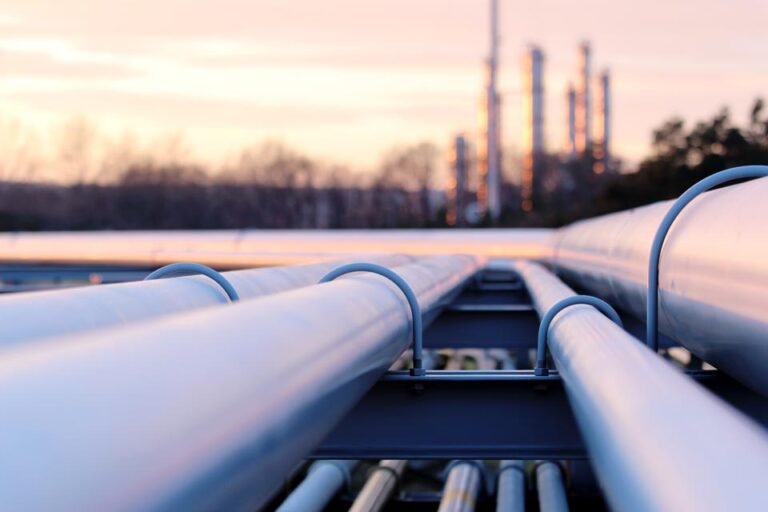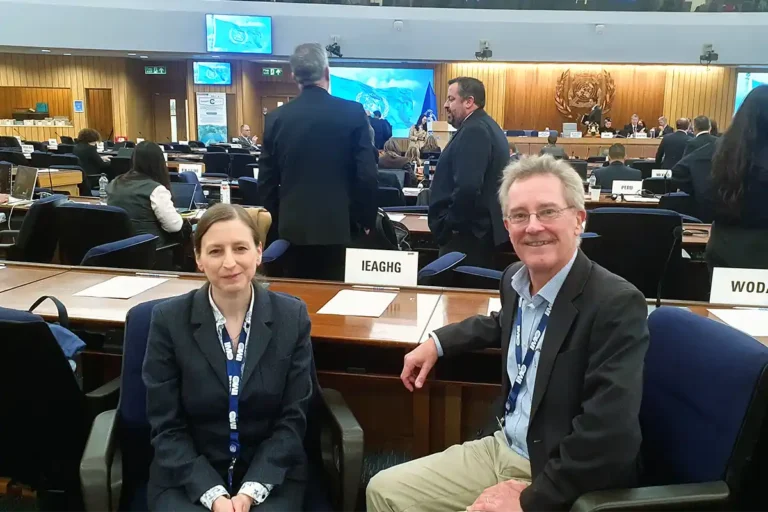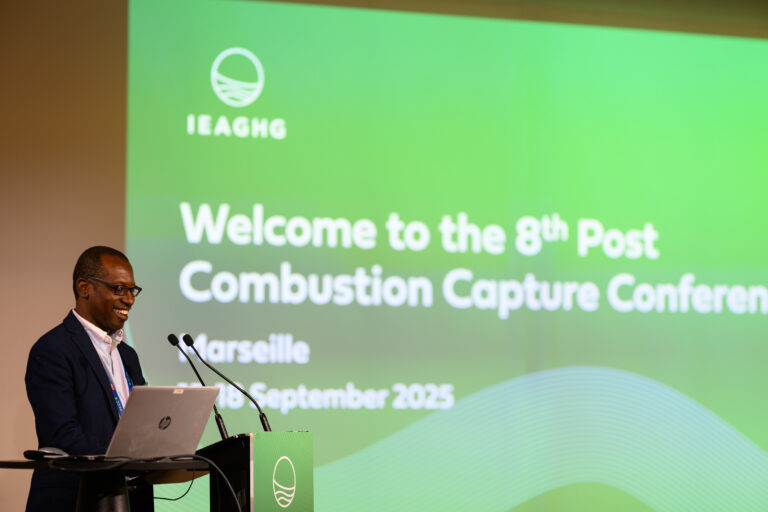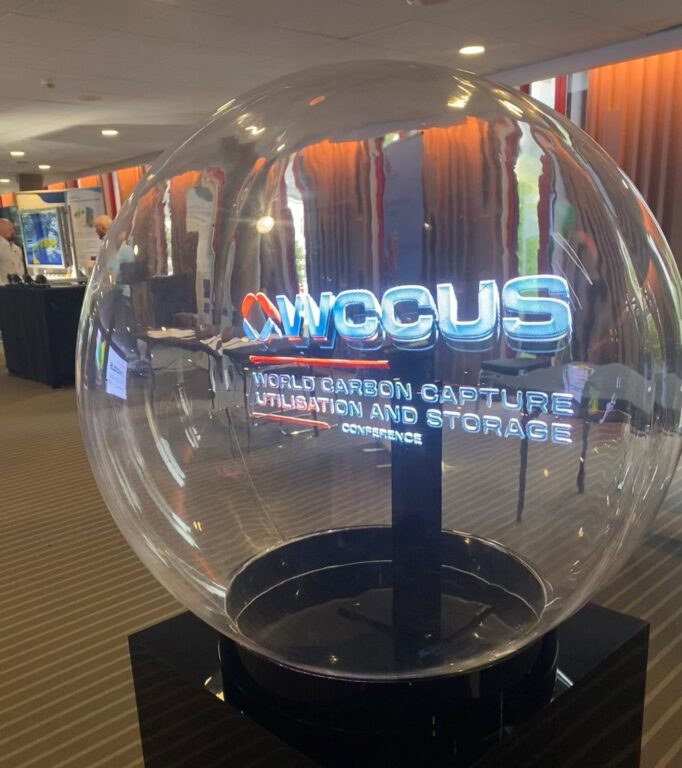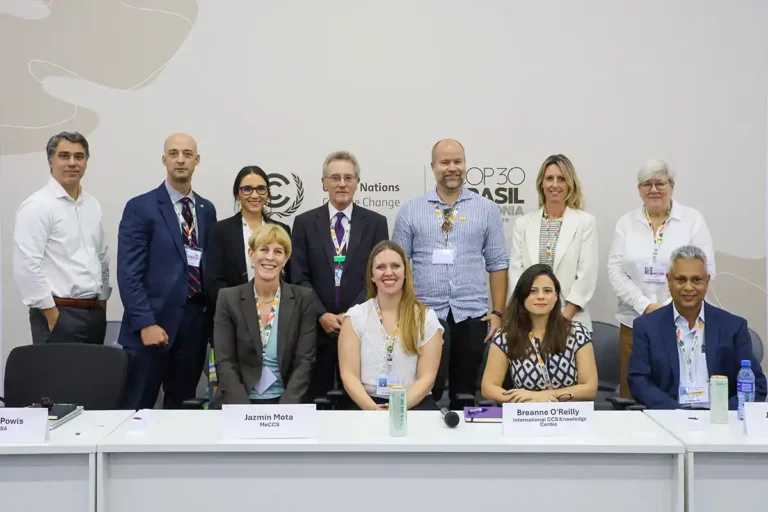
IEA Energy Innovation Forum 2025
19 November 2025
IEA Energy Innovation Forum 2025 was held on 29 October 2025, following the publication of the IEA’s report on “The State of Energy Innovation”

The IEA Energy Innovation Forum 2025 was held on 29 October 2025, in Toronto, Ontario, just prior to the G7’s 9th Ministerial on Climate Action (MoCA9). It followed publication of the IEA’s report on “The State of Energy Innovation” earlier in the year. Attended by more than 250 energy decision makers from around the globe, the event was co-hosted by the IEA and the Government of Canada. The invitation-only event addressed how greater technology innovation could help deliver a more secure, sustainable and affordable energy future. IEAGHG was one of a handful of the IEA’s Technology Collaboration Programmes that participated.
Session 1
The Honourable Tim Hodgson, Minister of Energy and Natural Resources, gave the welcome address. He began with the observation that innovation would play a critical role in enabling a faster and more affordable transition to a secure, sustainable energy sector. He recognised there would be challenges, not least achieving economic competitiveness in concert with climate responsibility. He said that innovation would enable a reliable, affordable, low-carbon energy system that would lead to the export of know-how, technology and resources, strengthening economic opportunity for Canada and its allies.
Regarding Canada’s commitment to innovation, Minister Hodgson reminded participants that, earlier that day, NorthX Climate Tech had committed CAN$3.4 million to four emerging carbon dioxide removal technology ventures: CarbonRun, pHathom, Skyrenu and NULIFE Greentech. He pointed out that an early NorthX investee, Arca, had now scaled up to become a serious global player, creating jobs and bringing financial growth to Canada and, in fact, had just signed one of the world’s largest CDR offtake deals with Microsoft.
Three key levers of focus for energy innovation were emphasised:
- Regulatory certainty and speed of permitting
- Financial tools to de-risk first-of-a-kind (FOAK) clean energy projects
- Leveraging data and digital/AI technologies to accelerate progress.
Minister Hodgson finished by saying, “It is time to get serious about building an energy future that provides prosperity for the next four years and the next four decades. A future that is secure, affordable and sustainable.”
Next, Timur Gül, the IEA’s Chief Energy Technology Officer and Head of its Energy Technology Policy Division, welcomed participants on behalf of the IEA. He stated that, more than simply addressing energy security, energy innovation was critical to the global energy system, delivering advancements that shaped how energy was produced, consumed and distributed. Achieving these advancements better and faster was important. The IEA, he said, had been tracking innovation since 2020, leading to the first IEA Energy Innovation Forum 2024, held in Paris, followed by publication of “The State of Energy Innovation” report – a publication that provides a comprehensive, data-driven assessment of recent progress and emerging challenges in energy technology innovation.
Through the report, the Energy Innovation Forums and the IEA’s Technology Collaboration Programmes, Timur said that the energy innovation ecosystem was being given a voice across governments. Important conversations and information sharing were enabled that would propel energy innovation forward.

Regarding the “The State of Energy Innovation” report, recognising that innovation is notoriously difficult to measure, Timur said that as much data as possible was compiled to increase transparency. As intangible progress doesn’t get the attention of decision makers, tangible examples were used in the report to illustrate innovation and highlight progress.
The Royal Bank of Canada’s John Stackhouse then delivered his keynote address. He began by highlighting how we all now live in a new era of urgency, one in which ambitions are growing and horizons shrinking. He illustrated this by pointing out that:
- It took 15 years for the semiconductor to change the world
- It took 5 years for the Internet to change the world
- And it’s taken barely 15 months for generative AI to change entire landscapes
Long term, he said, is now six months, with the world restructured by three defining forces, all connected by energy security:
- Frontier technology. Energy is essential to growth, as scaling is not possible without a new quantum of energy, and it needs to be secure energy.
- Growing geopolitical divisions over trade. Countries trading less will inherently need more of their own energy or, at least, energy from a smaller range of suppliers – and innovation will be essential!
- A new security paradigm. Increased defence and security needs are uppermost for many governments, and defence supremacy requires energy.
These forces point to a clear global need for low-cost, accessible, reliable energy, with nations and companies able to secure abundant, low-carbon power, having greater energy security. Secure and affordable access to data, energy and critical minerals would be key. All of this, he said, would need to be achieved at “Silicon Valley speed”.
Session 2
This session comprised a ‘fireside chat’ that featured three innovators: Luca Mezossy-Dona (IONATE), Amanda Hall (Summit Nanotech) and Philippe Hoeblich (PayGas). The companies represented addressed sustainable, reliable lithium extraction. The broad messages were that:
- Technological innovation is now central to energy security, industrial competitiveness and the net-zero transition.
- Many promising technologies are still at demonstration or early scaling phases, and the ecosystem around them (finance, regulation, business models) needs strengthening.
Session 3
Representatives of four large-scale FOAK energy technology projects were then asked to share their views on progress and the challenges they faced. The FOAK projects covered ultra-low-carbon synthetic e-fuels (Infinium); Geothermal Anywhere (Eavor Technologies); direct air capture – DAC (1PointFive); and a revolutionary way to produce aluminium (ELYSIS).
Of particular interest was 1PointFive’s STRATOS project that, when operating, will become the world’s largest DAC facility. Designed to capture up to 500,000 Mt CO2 annually, the project is progressing at a pace that demonstrates just how quickly large-scale carbon removal can become a reality. Located in Ector County, Texas, the U.S. Environmental Protection Agency has already approved its Class VI permits to store CO2.
The session on large-scale FOAKs recognised the substantial technical and financial challenge of taking prototypes to deployment. This forum certainly helped to place emphasis on how these demonstration-to-market pathways might be accelerated. It reinforced the view that cross-border cooperation on, e.g., innovation, minerals, critical technologies and infrastructure, was essential.
Session 4
Focusing on “Energy technology innovation for development and for securing energy needs”, it was underlined that innovation should not just serve advanced economies but also must support energy access, reliability and affordability in emerging and developing markets.
Helping senior decision-makers identify high-impact actions they could prioritise in the near term was a key objective of the forum.
Session 5 and Key Takeaways
- The forum signalled that the IEA was placing innovation at the core of the clean energy transition – with a clear shift towards how technologies were deployed, upscaled and commercialised.
- That technology innovation was necessary but not sufficient was underscored — policy, regulatory frameworks, business models, finance, markets, infrastructure, scaling, and deployment were all equally critical.
- Meeting targets for, e.g., emissions, net-zero and energy access, would rely heavily on the demonstration, scaling and market-integration of new technologies – not just on mature renewables.
- Energy innovation deliberations were tied to energy security, affordability, industrial competitiveness and resilience rather than purely to climate change or emissions – these were strong signals for governments, investors and technology providers.
- Innovation and FOAK projects need certainty, i.e., they need secure, stable, and long-term policy frameworks.
- The “innovation-to-deployment” gap needs to be prioritised, i.e., with a greater focus on demonstrators, commercial rollout and upscaling.
- International cooperation on R&D, standards, supply chains (especially critical minerals), and cross-border infrastructure requires support.
- The importance of international cooperation was amplified, especially given the G7 context, and the need to align innovation policies across jurisdictions.
- Developing and emerging economies must be part of the innovation ecosystem, ensuring that innovation addresses access and affordability.
- Attention must be focused on what to act on over the next 12 months, as building momentum early avoids stalling later.
- The IEA Energy Innovation forum moved beyond just dialogue, e.g., Canada made concrete commitments in CCUS and AI-for-energy.
- The role of AI and digital solutions as enablers of energy transition was elevated – not just for incremental improvements but potentially for breakthrough change.
Other articles you might be interested in
Get the latest CCS news and insights
Get essential news and updates from the CCS sector and the IEAGHG by email.
Can't find what you are looking for?
Whatever you would like to know, our dedicated team of experts is here to help you. Just drop us an email and we will get back to you as soon as we can.
Contact Us Now

